- Home
- Jason Webster
The Spy with 29 Names
The Spy with 29 Names Read online
Contents
Cover
About the Book
About the Author
Also by Jason Webster
List of Illustrations
Dedication
Title Page
Epigraph
Prologue
PART ONE
1. England, 1941–2
2. Spain, Autumn 1941
3. Lisbon, December 1941
4. Southern England, April 1942
PART TWO
5. Spain, 1912–39
6. Spain and Portugal, 1939–41
7. Lisbon, 1941
PART THREE
8. The Eastern Front, Southern Sector, 25 December 1941
9. London, Spring 1942
10. London, Spring–Summer 1942
11. Britain, Summer–Autumn 1942
12. London, Glasgow and Madrid, March 1943
13. London, 1943
PART FOUR
14. Germany and the Eastern Front, July 1942–March 1943
15. London, March–June 1943
16. Britain, Summer 1943
PART FIVE
17. London, Early 1944
18. Britain, Winter–Spring 1944
19. Britain, Spain and Algeria, 1936–44
20. Britain, France and Germany, Spring 1944
PART SIX
21. London, Lisbon and Berlin, Spring 1944
22. England, Northern France and Southern Germany, 5 June 1944
23. London, 1 May–5 June 1944
24. Northern France and Southern Germany, 6 June 1944
25. London, 6 June 1944
26. Northern France, Southern Germany and Belgium, 6–9 June 1944
PART SEVEN
27. London, 9 June 1944
28. Madrid, Germany and the Pas-de-Calais, 9–10 June 1944
29. London, 10 June 1944
30. London, 13 June–29 July 1944
PART EIGHT
31. Normandy and Belgium, 8 June–18 July 1944
32. Normandy, July–August 1944
33. London, Normandy and Paris, August 1944
PART NINE
34. London and Madrid, August 1944–May 1945
35. Britain, the Americas and Spain, May–September 1945
PART TEN
36. Britain, Spain and Venezuela, 1945–84
37. Venezuela and Spain, 1945–84
38. Spain, Germany, France, Canada and Britain, 1945–Present
39. London and Normandy, June 1984
Epilogue: What If?
Appendix I: The Flow of Deception Material from the Allies to the Germans through Garbo
Appendix II: The 29 Names
Picture Section
Notes
Index
Acknowledgements
Select Bibliography
Copyright
About the Book
He fought on both sides in the Spanish Civil War. He was awarded the Iron Cross by Hitler and an MBE by Britain. To MI5 he was known as Garbo. To the Abwehr, he was Alaric. He also went by Rags the Indian Poet, Mrs Gerbers, Stanley the Welsh Nationalist – and 24 other names. He tricked Hitler over D-Day. He was the greatest double agent in history.
But who, exactly, was Juan Pujol?
Jason Webster tells of Pujol’s early life in Spain and how, after the Civil War, his determination to fight totalitarianism took him on his strange journey from Nazi spy to MI5 star. Working for the British, whom he saw as the exemplar of freedom and democracy, he created a bizarre fictional network of spies that misled the entire German high command. Above all, in Operation Fortitude he diverted German Panzer divisions away from Normandy, with a pivotal message transmitted from a small house in north London, through to Madrid, then to the German secret service, the German High Command and then finally to Hitler himself in the Berghof. Historians are agreed that, without Garbo, D-Day would almost certainly have failed – and our world would be a very different place indeed.
Meticulously researched, yet told with the verve of a thriller, The Spy with 29 Names comes from one of our leading writers on Spain. It uncovers the truth – far stranger than any fiction – about the spy behind one of recent history’s most important and dramatic events.
About the Author
Brought up in England, Jason Webster lived for many years in Spain. His acclaimed non-fiction books about Spain include Duende: A Journey in Search of Flamenco; Andalus: Unlocking the Secrets of Moorish Spain; Guerra: Living in the Shadows of the Spanish Civil War; and Sacred Sierra: A Year on a Spanish Mountain. He is also the author of the Max Cámara series of crime novels set in Spain, the first of which, Or the Bull Kills You, was longlisted for the CWA Specsavers Crime Thriller Awards New Blood Dagger 2011. This was followed by A Death in Valencia and The Anarchist Detective.
ALSO BY JASON WEBSTER
NON-FICTION
Duende: A Journey in Search of Flamenco
Andalus: Unlocking the Secrets of Moorish Spain
Guerra: Living in the Shadows of the Spanish Civil War
Sacred Sierra: A Year on a Spanish Mountain
FICTION
Or the Bull Kills You
A Death in Valencia
The Anarchist Detective
List of Illustrations
1. The Dieppe Raid, 19 August, 1942
2. Juan Pujol, aged 21, on military service, 1933
3. The bombing of Barcelona, 1938
4. Pujol and Araceli in Madrid, c. 1940
5. The German Embassy in Madrid
6. The cottages at Bletchley Park
7. Tomás (Tommy) Harris, 1942
8. Pujol in London, 1942
9. 35 Crespigny Road, the MI5 safe house
10. 55 Elliot Road, Pujol’s home until early 1944
11. Pujol’s handwriting
12. Joachim Peiper in Spain with Himmler, October 1940
13. Joachim (‘Jochen’) Peiper, 1943
14. Tiger Tanks, 1st SS Panzer Division LAH, in France, March 1944
15. The text of Garbo’s D+3 message
16. The Berghof, Hitler’s Alpine home
17. V-1 flying bomb over London, June 1944
18. The Stanford map of London, used to locate V-1 bomb sites
19. Sherman tanks of the 23 Hussars, Operation Goodwood, Normandy, July 1944
20. Libération, Paris, 25 August 1944
21. Pujol in disguise, December 1944
22. Tomás Harris, self-portrait
23. Harris in Spain, after the war
24. Pujol’s grave in Choroní, Venezuela
Sources: 1, 5, 12, 13, 14, 16 German Federal Archives; 2 misaventurasfavoritas.com; 3 Italian airforce; 4 laopinondezamora.es; 6 Matt Whitby; 7, 21 HMSO; 8, 11, 15, 18 National Archives, Kew; 9, 10, author; 17 US Federal Archive (WM); 19 Imperial War Museum; 20 lapaseata.files.wordpress.com; 22, 23 Private collection; 24 dir.webring.org.
For Gijs and Alex van Hensbergen, with thanks
The Spy with 29 Names
The Story of the Second World War’s Most Audacious Double Agent
Jason Webster
‘Reality is not always probable, or likely.’
Jorge Luis Borges
‘Facts are the enemy of truth.’
Miguel de Cervantes
Prologue
Morning off the Normandy coast. Finally: they have been waiting years for this.
An ashen dawn is trickling into the sky as the flotilla of British warships moves in closer. On deck, peering out over the grey-green sea, Private Jack Poolton of the Royal Regiment of Canada is waiting his turn to go ashore. The Channel is calm, the crossing has been easy.
Jack’s letter home, to be sent if he does not return, is written and stored away. He tells his
mother what is about to take place – a major attack against the northern coastline of Nazi-occupied France. Jack hopes that his generation will fight as bravely as their fathers did in the Great War. Much depends on what will happen that morning. To the east, the Russians are clamouring for this, a ‘second front’, to be opened in the west.
He remembers the past months’ training in England: the manoeuvres and marches, and the children killed when a German Focke-Wulf bombed a cinema in Littlehampton before they embarked. To be here this morning Jack has lied about being able to swim, and has hidden the fact that he has trench mouth, caught from washing his mess tin in dirty water. But he is keen to see action. Perhaps, when he gets back, he will talk about today’s events with Irene, the WAAF girl from Lancashire he met while sheltering from an air raid in the cellars of Birmingham railway station. She gave him a hat badge to remember her by; her mother ran a pub – the beer would be on the house whenever he could make it.
None of the men are interested in the tea and sandwiches laid on. Nor are there any rum rations or prayers: no one feels the need. The signal comes and they climb down into the landing craft. Jack is a mortar man, and sits near the back.
The first sign that things are going wrong comes when a German convoy intercepts British commandos on the Canadians’ left. The gunfire alerts the defence forces on the coast, who fire star shells and chandelier flares to light up the sky. The attackers become visible, the element of surprise gone. Attempting to avoid detection, the Canadians turn in circles, slowing down their progress to the shore. Now, instead of a landing at dawn, it will be full daylight by the time their boots touch the beach.
A giant firework display begins, ‘like a thousand guns firing’: they are entering hell itself, Jack thinks. He is part of the second wave. Five hundred yards from the shore, his vessel is hit by heavy fire. A bullet passes through his tunic, near his shoulder, but mercifully draws no blood.
The landing craft is already reversing before all the men manage to get out. Jack jumps into 8 feet of water carrying the mortar, twelve high-explosive bombs, his grenades, and 250 rounds for a .303 rifle. Wading ashore, he realises that they are in the direct line of fire of a machine gun, bullets kicking up stones around his feet. Many of his comrades are already dead. The beach is littered with the shattered remains of the first wave.
Jack seeks cover behind a shallow abutment as the Germans accurately drop shells on their positions. It is, he thinks, as if the whole thing has been rehearsed. He sees Canadian soldiers trying to throw grenades at the enemy, only to be shot as they pull the pin, the weapon then exploding among their own men.
High explosives are useless in these conditions. Jack dumps his equipment and stretches out for the nearest rifle as men around him are cut down by enemy fire. He tries to join a group scaling cliffs nearby, but the man ahead of him is killed as he reaches the top, falling back on to Jack and dragging him to the bottom again.
The tide is coming in and wounded men on the beach are drowning. A landing craft comes ashore to take them away, only for the Germans to place a mortar shell in the middle of it. More men are shot dead as they cling to the sinking wreckage.
A white flag appears – someone has stuck an undershirt to a bayonet. Most in his regiment are surrendering. Jack and his company commander, Captain Houssar, decide to fight on. Alone, they charge down the beach armed only with rifles, but are pushed back by machine-gun fire.
There is no hope: they are trapped. Jack and Captain Houssar are the last Royals to put down their weapons. They are alive, but with surrender comes a deep feeling of humiliation. You can train a soldier to fight and accept death, Jack realises, but there is no way you can prepare him for being taken prisoner.
The attack has failed in only a few hours. Thousands have been killed. Thoughts of opening up a ‘second front’ are now almost as dead as the men on the shore, staining the seawater red. Pieces of body lie everywhere – feet with boots still on them; men stuck to barbed wire, burning where the bombs in their packs have exploded. The Germans are giving the seriously wounded coups de grâce to the back of the head.
As Jack climbs a ladder away from the beach and into captivity, an English-speaking German officer smirks and asks, ‘What took you so long? We have been waiting for you for ten days.’
They knew they were coming all the time.
The Royals walk away from the battle, their hands held above their heads, while German photographers take snaps of the defeated enemy. This is great propaganda. The Germans can relax in the west now. Europe is theirs; they can concentrate on fighting the Russians.
Shattered yet defiant, the Allied soldiers start singing La Marseillaise as they march along. Their captors are furious. French civilians at the roadside start to weep and show the V for Victory sign.
For Jack there is nothing now except life in a prisoner-of-war camp. His role in the war – his Normandy – has come to an end. It will be years before he is free again.
Today, on 19 August 1942, almost 4,000 Canadian and British soldiers out of a total force of 6,000 have been killed, wounded or captured. The Dieppe Raid, as it is called, is a military disaster, an attack which the Germans themselves, with just over 300 dead, consider mediocre at best. Yet the lessons for the Allies are invaluable. Jack does not know this, but already the seeds have been sown for a second Normandy, two years later in 1944. Not here, not in and around the port of Dieppe, but over 80 miles to the south-west, towards the Cherbourg peninsula – an assault which will draw heavily on what has happened to him and his comrades this morning, attempting to avoid the same mistakes.
Firstly, never attack a port – they are heavily defended, and the cost in human lives is too high.
Secondly, any assault must be carried out on a much more massive scale and with greater cooperation between air, land and sea forces.
And thirdly, unlike at Dieppe, the enemy must not know where or when you are going to attack. Surprise, that most crucial of weapons, must be protected and used.
Even then, there remains the doubt: would surprise alone be enough?
One last scene catches Jack’s attention as the defeated Allied soldiers are leaving the town. On the outskirts a woman approaches the column, walking alongside them for a few yards.
‘Insult me in French!’ she whispers to one of the men.
The soldier looks baffled, but something in the woman’s expression makes him wonder. At her bidding, he starts to cuss and swear aggressively, shaking his fist and shouting obscenities.
On cue, the French woman responds and starts pelting him and the other soldiers with tomatoes, launching them with a look of rage on her face.
It seems odd: the tomatoes are not hitting the soldiers hard; despite her shouting and harsh words, the woman is actually tossing them rather gently. The defeated men are at their lowest ebb, their spirits crushed, yet are quick to catch on. Scooping up the tomatoes, they hide them in their tunics for eating later, grateful for this act of camouflaged charity. It will be a long time before the Germans offer them anything to eat or drink.
The Germans, however, think the woman is genuinely upset, and find the scene immensely funny. They even pat her on the back, praising her for her spontaneous act against the Englische Schweine.
They never realise they have been deceived.
PART ONE
picaresque, adj. of or relating to an episodic style of fiction dealing with the adventures of a rough and dishonest but appealing hero.
ORIGIN from Sp. picaresco, from pícaro ‘rogue’.
pícaro adj.(a) crafty, cunning, sly, wily (b) mischievous, naughty, crooked.
1
England, 1941–2
ALLIED DISASTERS IN the Second World War were not limited to the Dieppe Raid. After the collapse at Dunkirk in 1940 and defeat in the Balkans in 1941, many doubted whether the British Army could prevail in a straight fight against the Wehrmacht. Even with the help of the United States, with its greater industrial strength and manp
ower committed from late 1941, it would be difficult to defeat a highly trained and fearsome opponent.
Other means – ‘special means’ – had to be developed to overcome the enemy. The Germans could pluck a seemingly endless supply of fighting men from a culture that valued discipline and glorified war. But the British applauded characteristics that would become effective weapons against them: wit and eccentricity. Intelligence, counter-intelligence and deception were to become vital for the Allied war effort. There was a need for thinking in extraordinary and different ways, for talented men and women to set their minds on how to surprise and fool the enemy. Something like Dieppe could never be allowed to happen again.
In this atmosphere, the craziest schemes could tip the balance in the Allies’ favour. And often such a scheme was the brainchild of a tiny group of people or an odd individual.
This is the story of one of those men and the decisive part that he played in the success of D-Day and the Normandy campaign. The tale has been told before, even by the man himself, but only partially: gaps were left unfilled, veils drawn over uncomfortable facts. The character at the centre remained an enigma, his true personality rarely emerging.
He was a Spaniard, from Barcelona – a dreamer, a cheat and a liar, and yet the noblest and kindest of men; a compulsive storyteller who could barely tell a story, so purple was his prose. If he were not real, he might appear like a character from a picaresque novel – a saintly rogue and compelling fantasist with unorthodox ideas about truth, someone who defies simple labels of ‘good’ and ‘bad’: at once innocent, like Don Quixote, and wily, like Sancho Panza.
He became the greatest double agent in history, creating a new truth by telling untruths. This is the story of who he was and what he did, and of some of the many lives that were changed by his achievements. The details and quoted conversations are taken from records, letters and memoirs of those who knew him.

 Violencia
Violencia Or the Bull Kills You
Or the Bull Kills You The Killing of El Niño Jesús
The Killing of El Niño Jesús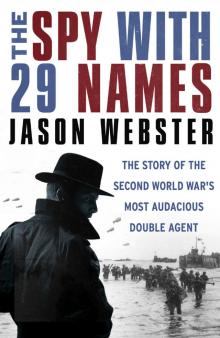 The Spy with 29 Names
The Spy with 29 Names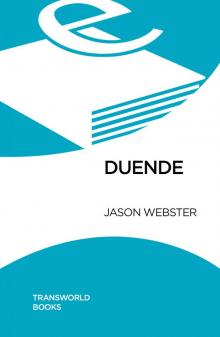 Duende
Duende Guerra
Guerra Sacred Sierra
Sacred Sierra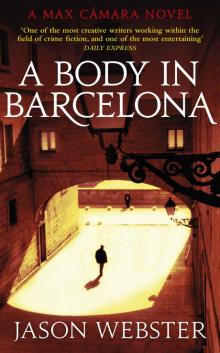 A Body in Barcelona: Max Cámara 5
A Body in Barcelona: Max Cámara 5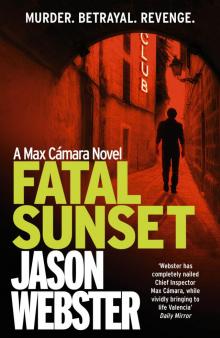 Fatal Sunset
Fatal Sunset A Death in Valencia
A Death in Valencia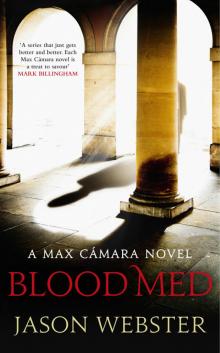 Blood Med
Blood Med Andalus
Andalus